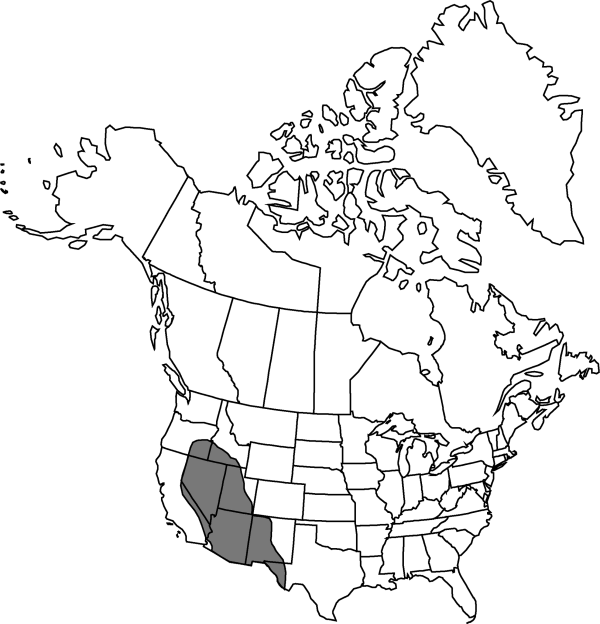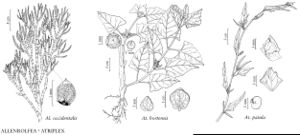Difference between revisions of "Allenrolfea occidentalis"
Revis. Gen. Pl. 2: 546. 1891.
Illustrated
Basionym: Halostachys occidentalis S. Watson Botany (Fortieth Parallel), 293. 1871
imported>Volume Importer |
imported>Volume Importer |
||
| Line 56: | Line 56: | ||
|publication year=1891 | |publication year=1891 | ||
|special status=Illustrated | |special status=Illustrated | ||
| − | |source xml=https:// | + | |source xml=https://bitbucket.org/aafc-mbb/fna-data-curation/src/2e0870ddd59836b60bcf96646a41e87ea5a5943a/coarse_grained_fna_xml/V4/V4_623.xml |
|genus=Allenrolfea | |genus=Allenrolfea | ||
|species=Allenrolfea occidentalis | |species=Allenrolfea occidentalis | ||
Latest revision as of 21:59, 5 November 2020
Plants 3–15 dm, ± glaucous. Stems woody proximally, fleshy distally; articulations (joints) (2–)3–5(–10) × 1–4.5 mm. Leaves deciduous; blade 2–4 × 2–3 mm. Inflorescences 6–25 × 2.5–4 mm. Utricles enclosed by perianth. Seeds ca. 0.6 mm.
Phenology: Flowering mid summer–late fall.
Habitat: Alkaline soils, mostly on raised sandy hummocks in salt playas and mud flats
Elevation: 1000-1700 m
Distribution

Ariz., Calif., Idaho, N.Mex., Nev., Oreg., Tex., Utah, Mexico.
Discussion
A dominant shrub of salt playas and mudflats in the American Southwest, iodine bush is easily distinguished from great distances by the dark hue of its stems. The blackish-colored shrubs stand in stark contrast to surrounding vegetation and on close examination can be easily distinguished from the opposite-branched, but vegetatively similar members of Sarcocornia.
Selected References
None.
Lower Taxa
None.
